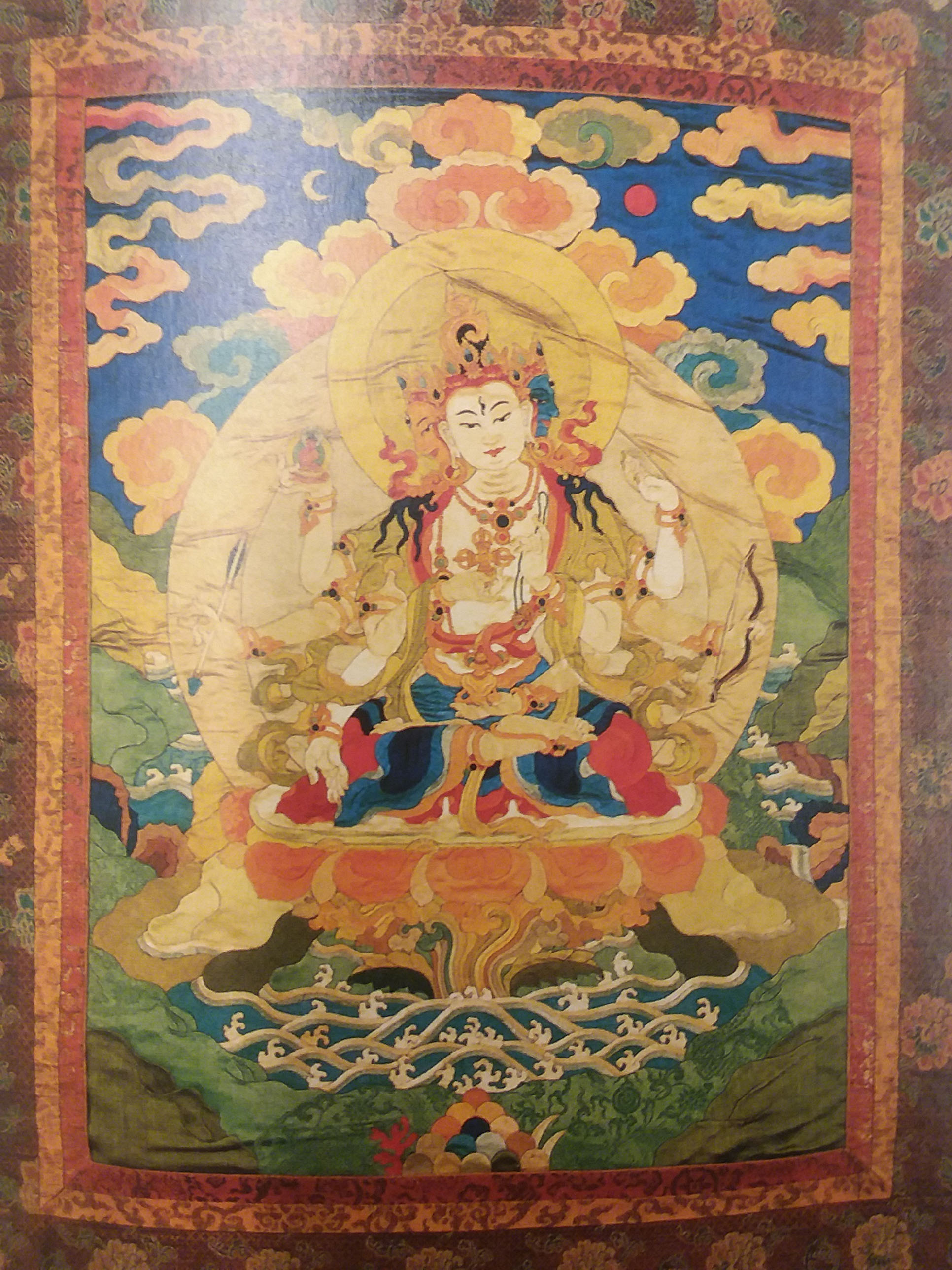This post was written by Emily Rusch, Research Services Assistant.
Buddhism is the world’s fourth largest religion with over 250 million followers. Buddhism encompasses a large variety of traditions and beliefs, but nearly all Buddhist practices and thought can be traced back to Siddhartha Gautama. Siddhartha was a prince living on the Indian subcontinent in approximately 550 B.C.E. Siddhartha became disenchanted with his lavish lifestyle as a prince, and ran away from the palace to become a monk. Siddhartha stayed with a group of extreme ascetics, and drove himself to the point of starvation. After six years, Siddhartha abandoned the group of ascetics and decided to start eating again. After his first real meal in years, Siddhartha sat under a Bodhi tree and meditated. On his sixth day of meditation, Siddhartha realized the nature of all things, and became the enlightened Buddha. This sculpture depicts the moment that the Buddha became enlightened. You can see the Buddha touching the ground in the sculpture. This is because the Buddha called upon the earth goddess as a witness to his enlightenment.
Below are pictures from the Encyclopedia of Buddhist Arts. Special Collections Research Center has a collection of 20 encyclopedias on various Buddhist art forms, including artifacts, architecture, rock carvings, sculptures and paintings. Pictured are various Buddhist artifacts that the encyclopedias showcase. A stone tablet shows the Buddha meditating under the Bodhi at Bodhgaya. The books also go into detail on a collection of Buddhist masks discovered at a monastery in Mongolia. Pictured is Yama, the wrathful god of death. (Yama) Many people are under the impression that there are no gods in Buddhism. However, there are millions of Buddhist gods! Shown is an embroidered silk scroll, created in 1691, depicting the compassionate and merciful Avalokitesvara. A second embroidery shows Usnisavijaya, one of the three longevity Buddhas. He is sitting on his lotus flower throne in the middle of a lake.

Mask of Yama, Yun, Hsing, Encyclopedia of Buddhist Arts, N8193 .A5 S5213 2016 V.18, Special Collections Research Center, George Mason University Libraries.
If you are interested in Buddhism or art history, come check out more beautiful images in our encyclopedia collection! The art forms are arranged in categories, with an introduction on the historical and cultural value of the artwork. All of the pieces include notes listing their original location and the approximate year they were created.
Follow Special Collections Research Center on Social Media at our Facebook, Instagram, and Twitter accounts. To search the collections held at Special Collections Research Center, go to our website and browse the finding aids by subject or title. You may also e-mail us at speccoll@gmu.edu or call 703-993-2220 if you would like to schedule an appointment, request materials, or if you have questions. Appointments are not necessary to request and view collections.




